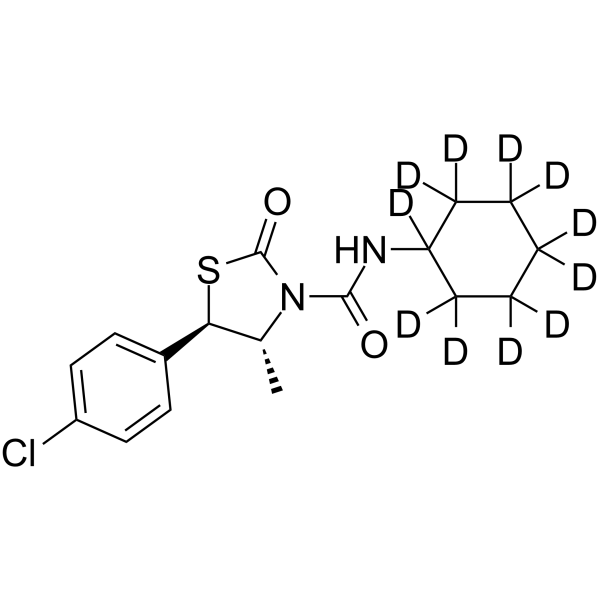Hexythiazox-d11
Modify Date: 2025-10-31 09:41:17

Hexythiazox-d11 structure
|
Common Name | Hexythiazox-d11 | ||
|---|---|---|---|---|
| CAS Number | 2714418-33-2 | Molecular Weight | 363.95 | |
| Density | N/A | Boiling Point | N/A | |
| Molecular Formula | C17H10D11ClN2O2S | Melting Point | N/A | |
| MSDS | N/A | Flash Point | N/A | |
Use of Hexythiazox-d11Hexythiazox-d11 is deuterium labeled Hexythiazox. Hexythiazox is a selective acaricide with ovicidal, larvicidal and nymphicidal activities. Hexythiazox is widely used for chemical control of mites on cotton, fruits and vegetables. Hexythiazox is harmless to mammals and has no effect on beneficial insects and predators of mites[1][2]. |
| Name | Hexythiazox-d11 |
|---|
| Description | Hexythiazox-d11 is deuterium labeled Hexythiazox. Hexythiazox is a selective acaricide with ovicidal, larvicidal and nymphicidal activities. Hexythiazox is widely used for chemical control of mites on cotton, fruits and vegetables. Hexythiazox is harmless to mammals and has no effect on beneficial insects and predators of mites[1][2]. |
|---|---|
| Related Catalog | |
| In Vitro | Stable heavy isotopes of hydrogen, carbon, and other elements have been incorporated into drug molecules, largely as tracers for quantitation during the drug development process. Deuteration has gained attention because of its potential to affect the pharmacokinetic and metabolic profiles of drugs[1]. |
| References |
| Molecular Formula | C17H10D11ClN2O2S |
|---|---|
| Molecular Weight | 363.95 |